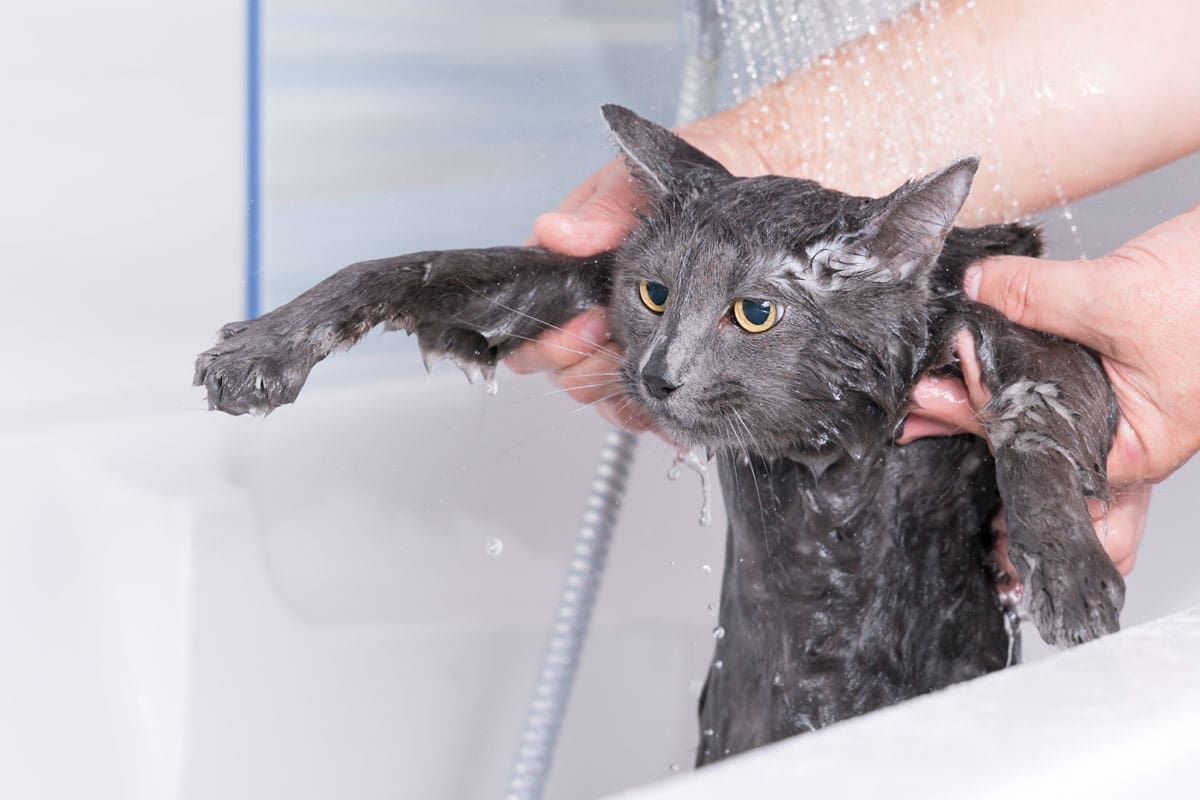Bathing a cat is often a challenging task for many pet owners, but not to worry, we’ll guide you through the steps to properly bathe a cat, making the process as stress-free as possible for both you and your furry companion.
Does my Cat Really Need a Bath?

Cats are continually grooming themselves, so you might think, “Does my cat really need a bath?” And in truth, some cats can go their entire lives without needing one.
But things happen. And there are times when your cat may need some assistance keeping clean. Like a cat that has gotten itself into something dirty, or has picked up parasites.
Some cats need a bath regularly. This is especially true for hairless cats and those with a skin condition. Regular bathing also might be necessary for cats with long coats, older cats, or those who are older or ill and cannot groom themselves.
How to Properly Bathe a Cat

Many people think that cats and water don’t mix, but actually, some cats enjoy it! Technically, though, most cats find the idea of someone putting them in water stressful.
Luckily with the right supplies, a calm demeanor, and a lot of patience, bathing your cat doesn’t have to be a major undertaking or disaster.
1. Gather Your Supplies

Before you start the cat bath, gather all the necessary supplies. You’ll need:
- A cat-specific shampoo (never use human shampoo, as it can be harmful to your cat).
- A large, shallow basin or sink.
- A hand-held sprayer or a pitcher for rinsing.
- Several soft, clean towels.
- Cat treats or toys to reward your cat for cooperation.
2. Choosing the Best Location

Before we look at the three places in the home that are most commonly used, let’s talk about where NOT to bathe your cat.
Don’t: Bathe your cat outdoors. If they slip out of your hands, they are likely to run away and will be at risk of getting lost, injured, or even killed.
Do: Opt for a place indoors where your cat can be contained if it slips out of your hands. The best choices are:
- Bathroom > bathtub: The benefit of the bathroom is that you can close the door and eliminate an escape option. A bathtub will give you plenty of room to work. If you have a hand-held shower sprayer, that will make the job even easier.
- Bathroom > bathroom sink: If it is hard for you to work on your knees or work bent over the bathtub, a sink is better so that you can stand.
- Kitchen > kitchen sink: If the bathroom sink feels too tiny, you may want to consider the kitchen sink, which will give you more room. If you have a garbage disposal, make sure to cover the drain to prevent your cat’s paws from falling in and potentially twisting or otherwise risking injury.
3. Prepare the Area First

Prepare the bathing area in a quiet and warm room. Make sure the room is free of drafts, and close any doors and windows to prevent your cat from escaping. Lay down a non-slip mat or a towel in the sink or basin to help your cat feel more secure.
4. Brush Your Cat
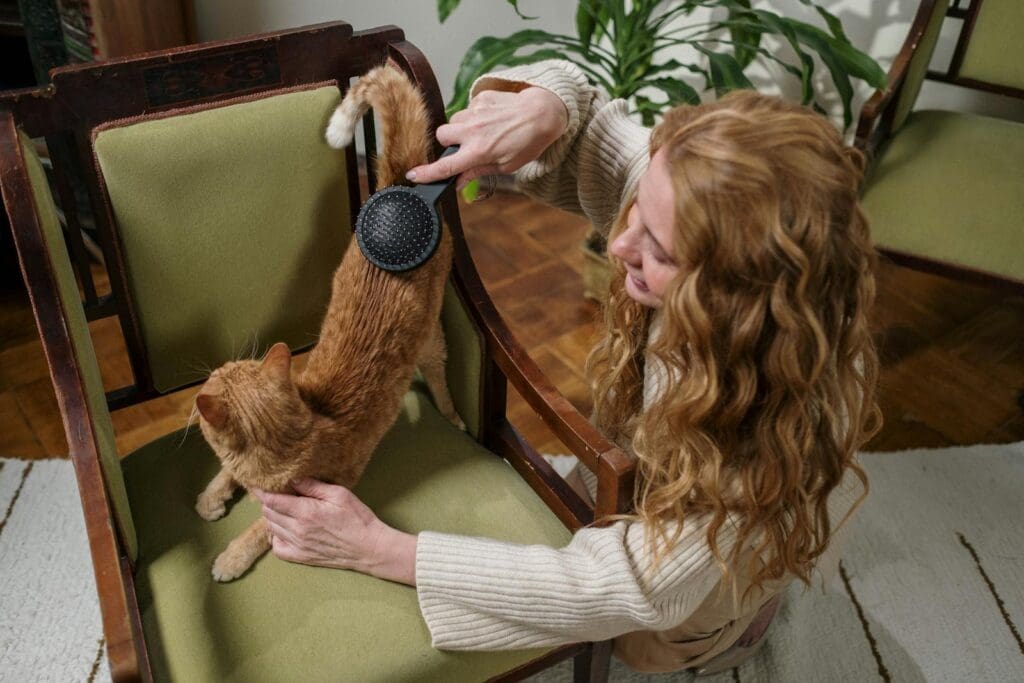
Before getting your cat wet, give them a gentle brush. This helps remove loose fur, mats, and debris, making the bath more effective and preventing fur clumps in the drain.
5. Introduce Your Cat to Water Gradually
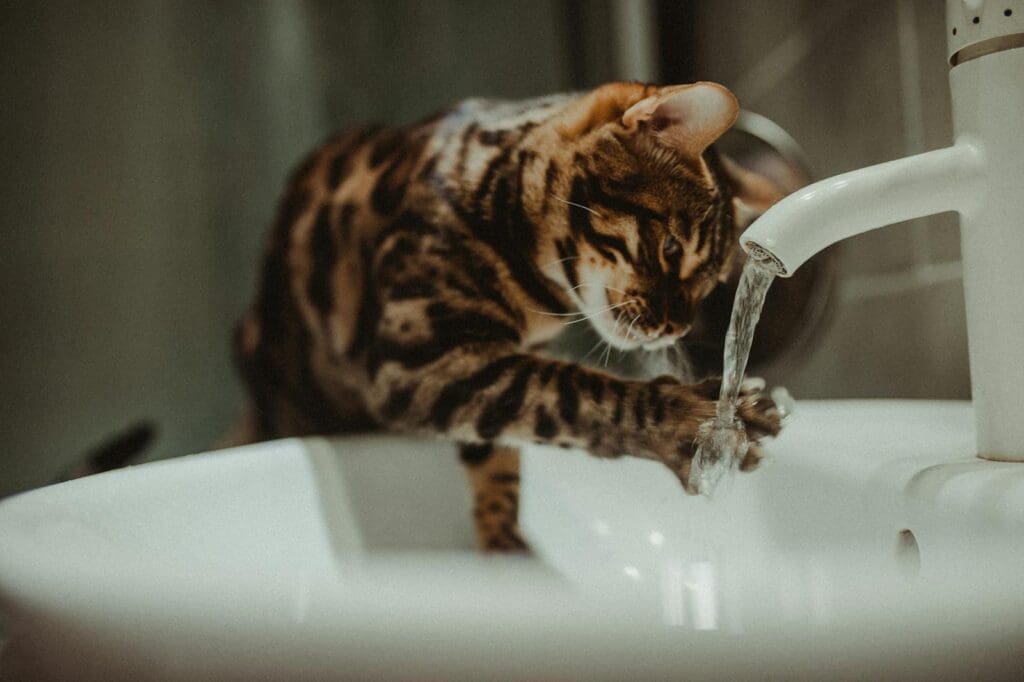
Cats often dislike water, so it’s crucial to introduce them to it gradually. Start by letting your cat explore the bathroom while the water runs, so they become accustomed to the sound. Gently introduce your cat to the water by wetting your fingers and allowing them to sniff and investigate.
6. Secure Your Cat

Hold your cat firmly but gently to prevent them from slipping or jumping out of the sink. You may want to enlist a helper to keep your cat steady while you bathe them. Another option is to use a leash and collar.
7. Use Warm Water
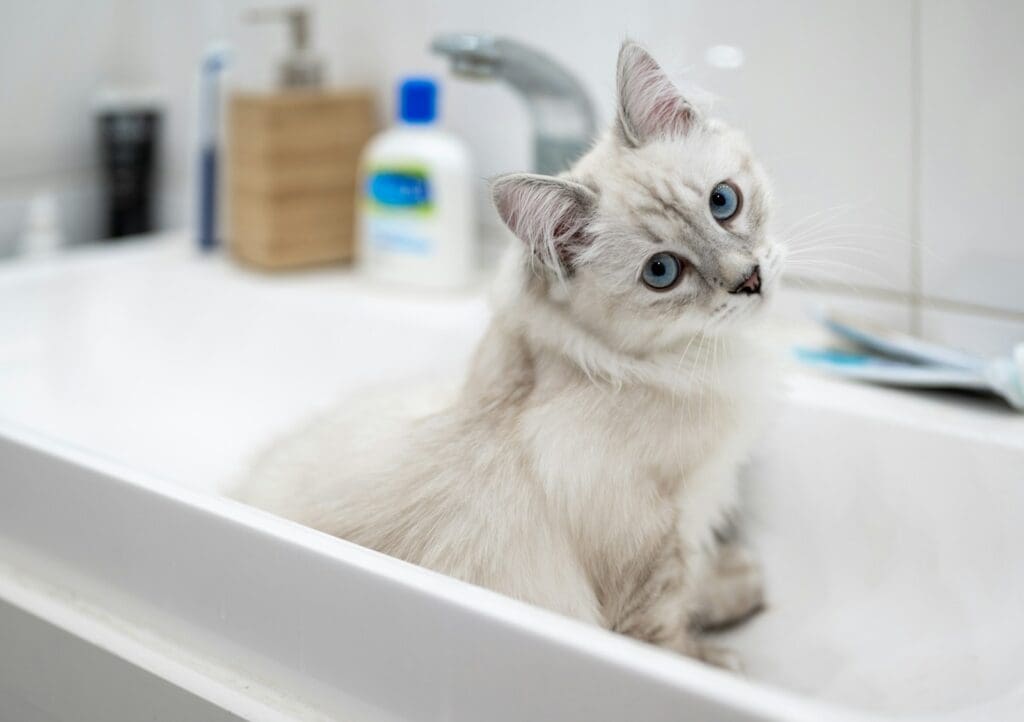
Fill the basin or sink with a few inches of warm (not hot) water. Make sure the water level is comfortable and doesn’t reach your cat’s head.
8. Apply Cat-Specific Shampoo

Dilute the cat shampoo with water and apply it gently to your cat’s fur. Be careful not to get any shampoo in their eyes, ears, or nose. Use a soft, gentle touch.
9. Rinse Thoroughly
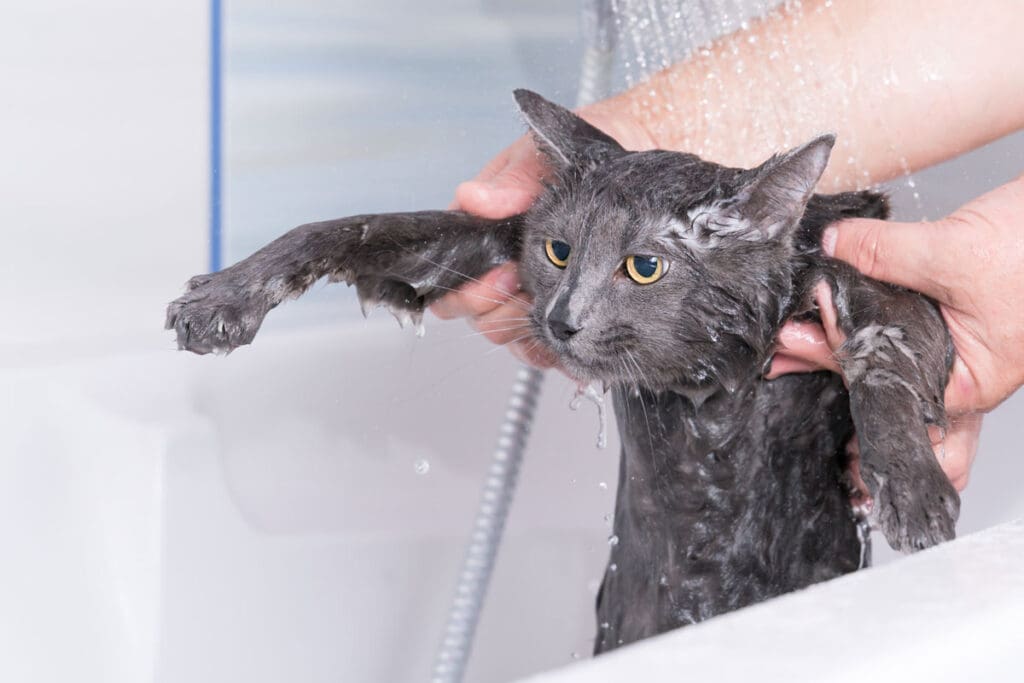
Using the hand-held sprayer or a pitcher, carefully rinse your cat’s fur until all the soap is removed. Ensure you don’t leave any soap residue, which can irritate your cat’s skin.
10. Dry Your Cat

Use a soft, clean towel to pat your cat dry. You can use a hairdryer on a low, cool setting, but ensure it’s not too close to your cat, and don’t use high heat.
11. Reward and Praise

After the bath, reward your cat with treats, playtime, or affection. This positive reinforcement helps your cat associate bath time with a positive experience.
Final Thoughts

Bathing a cat can be tricky, no doubt about it. But with patience, preparation, and a gentle approach, you can make it a relatively stress-free situation.
Always remember that not all cats need frequent baths, and many can maintain their grooming needs independently. Consult your veterinarian if you have specific concerns about your cat’s bathing requirements or if you encounter any skin or coat issues.

